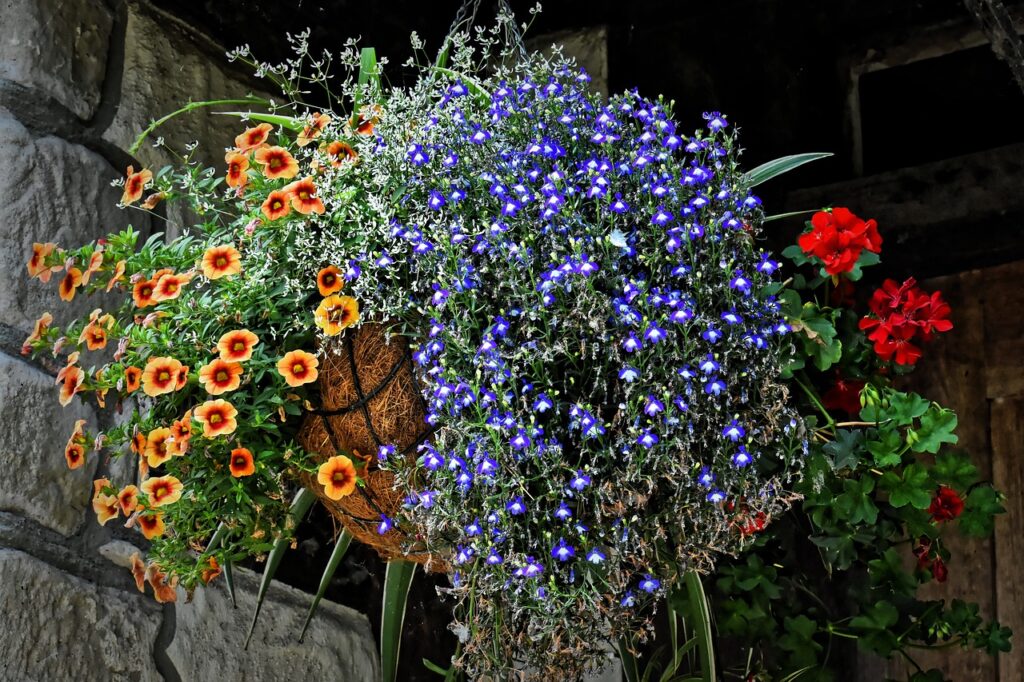Creating a garden that welcomes a variety of wildlife is not only a rewarding experience but also beneficial for the environment. By attracting birds, bees, and butterflies, you can contribute to the preservation of these important pollinators and increase biodiversity in your surroundings. In this comprehensive guide, we will explore various techniques and strategies for gardening for wildlife, focusing on attracting birds, bees, and butterflies. From selecting the right plants to providing essential resources, let’s embark on a journey to transform your garden into a wildlife sanctuary.
The Importance of Gardening for Wildlife
Gardening for wildlife is a noble endeavor that offers numerous advantages for both the ecosystem and garden enthusiasts. Let’s delve into the significance of attracting birds, bees, and butterflies to your garden.
- Biodiversity Enhancement: A diverse ecosystem leads to a healthier environment. Attracting various wildlife species promotes biodiversity, which is essential for the overall well-being of the planet.
- Pollination and Plant Reproduction: Birds, bees, and butterflies play a vital role in pollination, allowing plants to reproduce and bear fruits. Their activities contribute to agricultural productivity and the growth of natural habitats.
- Natural Pest Control: Encouraging natural predators like birds and beneficial insects like bees can help control harmful pests in your garden, reducing the need for chemical pesticides.
- Educational and Therapeutic Value: Watching wildlife in your garden can be a calming and educational experience, especially for children. It fosters an appreciation for nature and wildlife.
Planning Your Wildlife-Friendly Garden
Creating a wildlife-friendly garden requires thoughtful planning to ensure it meets the needs of the creatures you want to attract. Follow these steps to design an inviting space for birds, bees, and butterflies.
- Assess Your Garden: Observe your garden’s current state, including its size, exposure to sunlight, soil type, and existing plants. Understanding your garden’s characteristics will help you make informed decisions.
- Choose Native Plants: Native plants are well-adapted to the local climate and are a natural food source for local wildlife. Incorporate a variety of flowering plants that bloom at different times throughout the year.
- Create Shelter and Nesting Spots: Birds and butterflies need safe spaces to rest and nest. Install birdhouses, nesting boxes, and butterfly shelters to provide them with protection from predators and the elements.
- Add Water Features: A birdbath or a small pond can be a focal point for wildlife in your garden. Freshwater is essential for birds and other creatures, especially during dry spells.
- Avoid Harmful Chemicals: Minimize or eliminate the use of chemical pesticides and herbicides, as they can harm the very creatures you want to attract. Embrace organic gardening practices instead.
- Maintain a Variety of Habitats: Design different sections of your garden to mimic various natural habitats, such as meadows, woodlands, and wetlands. This diversity will attract a wide range of wildlife.
Plant Selections for Your Wildlife Garden

The choice of plants in your garden plays a pivotal role in attracting birds, bees, and butterflies. Opt for a mix of nectar-rich flowers, native trees, and shrubs that provide food and shelter throughout the year. Here are some LSI keyword-rich plant selections to consider:
- Butterfly-Friendly Plants: Marigold, Purple Coneflower, Black-Eyed Susan, Milkweed, Lantana.
- Bee-Friendly Plants: Lavender, Sunflower, Salvia, Bee Balm, Wild Bergamot.
- Bird-Friendly Plants: Dogwood, Elderberry, Serviceberry, Hawthorn, Honeysuckle.
Remember to group plants with similar water and sunlight requirements to ensure they thrive together.
Providing Food and Water
To create an enticing habitat for birds, bees, and butterflies, it’s crucial to offer a steady supply of food and water.
- Nectar Feeders: Hang nectar feeders to attract hummingbirds and other nectar-feeding birds. Use a mixture of four parts water to one part white granulated sugar (avoid red dye) to fill the feeders.
- Fruit-Bearing Trees and Shrubs: Plant fruit-bearing trees and shrubs like crabapple and holly to attract birds that feed on berries.
- Butterfly Puddling Area: Butterflies need minerals from damp soil to supplement their diet. Create a shallow puddling area by placing a shallow dish filled with sand, water, and a little salt.
- Year-Round Food Sources: Incorporate plants that provide food throughout the year, such as evergreens that offer seeds during winter.
- Fresh Water: Ensure there is a clean and reliable water source, such as a birdbath or a small pond, to quench the thirst of wildlife.
FAQs
Q: What types of butterflies are commonly attracted to gardens? A: Gardens often attract butterflies like Monarchs, Swallowtails, Painted Ladies, and Fritillaries, among others.
Q: How can I create a bee-friendly garden in a limited space? A: Even in small spaces, you can attract bees by planting a mix of nectar-rich flowers and providing a shallow water source.
Q: What should I avoid when trying to attract birds to my garden? A: Avoid using pesticides, herbicides, and excessive artificial lighting, as these can harm or deter birds.
Q: Are there specific plants that attract rare or endangered bird species? A: Yes, certain native plants can attract rare or endangered bird species depending on your geographical location.
Q: How can I identify bird species visiting my garden? A: Invest in a good field guide or use mobile apps designed for bird identification.
Q: Can I use artificial nectar for hummingbirds if I run out of the homemade solution? : While it’s not ideal, you can use commercial hummingbird nectar, but avoid those with red dye as it may be harmful to birds.
Gardening for wildlife is a rewarding journey that enriches both your garden and the environment. By thoughtfully planning your garden, selecting the right plants, and providing essential resources, you can attract an array of delightful creatures such as birds, bees, and butterflies. Embrace sustainable gardening practices and create a haven where wildlife can flourish. Start your wildlife-friendly garden today, and witness the beauty and joy of nature right in your backyard.

